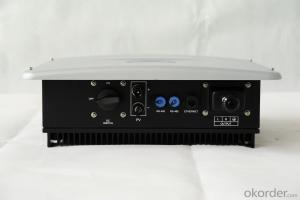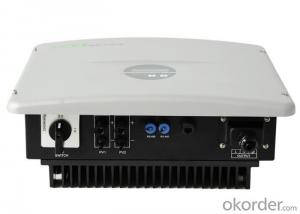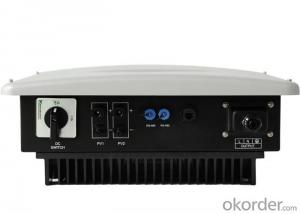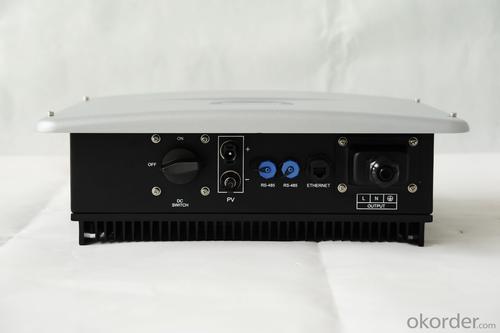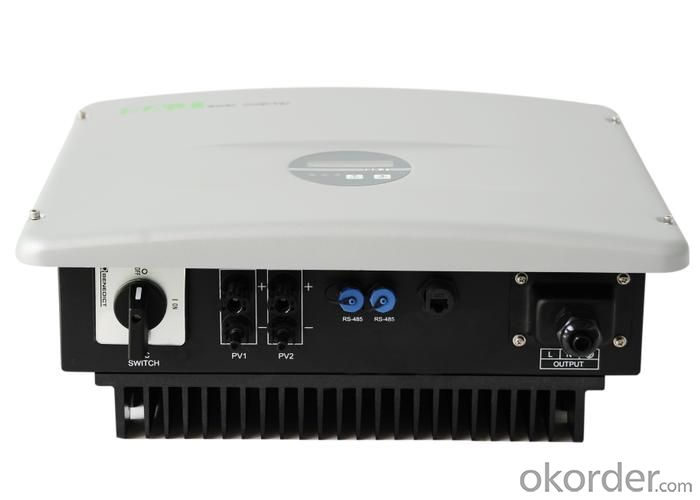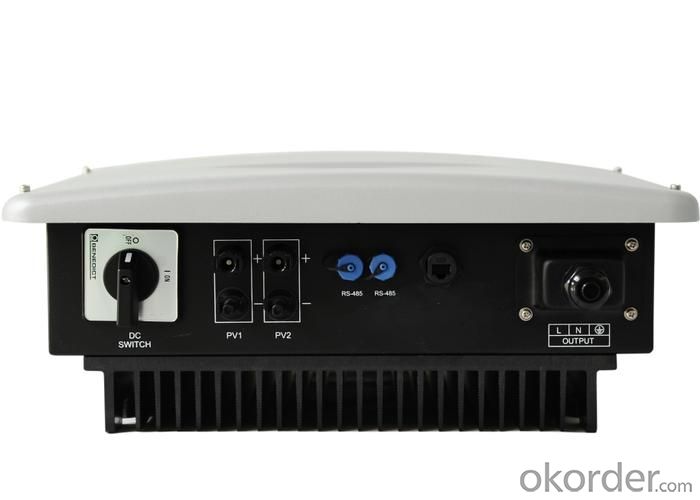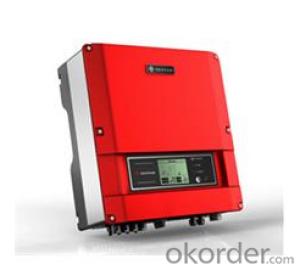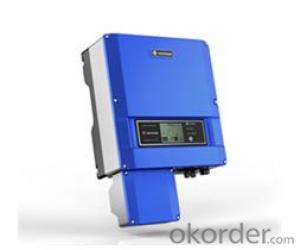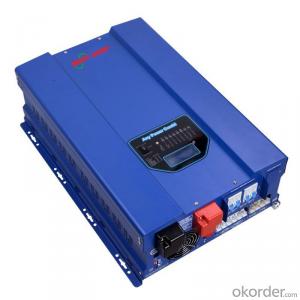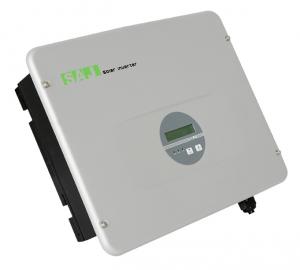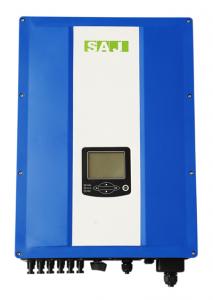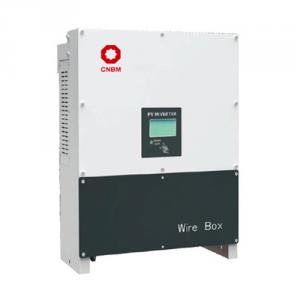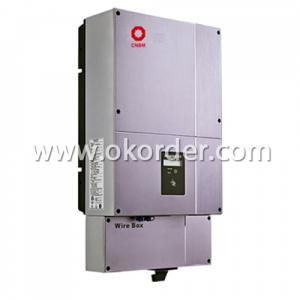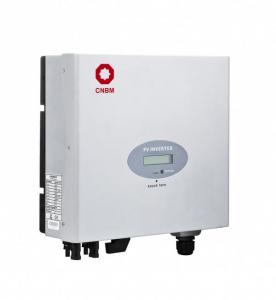Solar Inverter Board Sununo-TL1.5K,1 MPPT
- Loading Port:
- Guangzhou
- Payment Terms:
- TT OR LC
- Min Order Qty:
- 1 pc
- Supply Capability:
- 3000 pc/month
OKorder Service Pledge
OKorder Financial Service
You Might Also Like
The Sununo-TL1K/1.5K/2K solar inverter offers a range of benefits, including maximum energy harvesting,
through both its highspeed Maximum Power Point Tracker (MPPT) and transformerless technology.Combing the wide input voltage range makes the inverter suitable to low power installations with reduced string size.
The LCD display is to check real-time performance through its integrated data logger and more communication interfaces make it convenient for remote performance monitoring. The Sununo-TL1K/1.5K/2K is an ideal inverter for smaller residential PV plants.
Futures:
■Super junction MOSFET integrated with 97.4% Max. efficiency.
■ Wide MPPT voltage range and low minimum MPPT voltage for flexible configuration.
■ Transformerless design for lower cost and compact size.
■ IP65 and fan-less for longer-term reliability.
■ Ethernet/ Wi-Fi communication interface.
■ Integrated Web Server for local and internet monitoring.
■ Support SAJ Web Portal Monitoring Solutions.
Technical data:
| Model | Sununo-TL1K | Sununo-TL1.5K | Sununo-TL2K |
| Max. DC power [W] | 1200 | 1800 | 2300 |
| Max. DC voltage [V] | 480 | 480 | 480 |
| MPPT DC voltage Range [V] | 90-425 | 100-425 | 100-425 |
| Nominal DC voltage [V] | 360 | 360 | 360 |
| start voltage [V] | 100 | 150 | 150 |
| Min.DC voltage [V] | 80 | 100 | 100 |
| Max.DC input current [A] | 10 | 11 | 12 |
| Number of MPPT | 1 | 1 | 1 |
| string per MPPT | 1 | 1 | 1 |
| DC switch | optional | optional | optional |
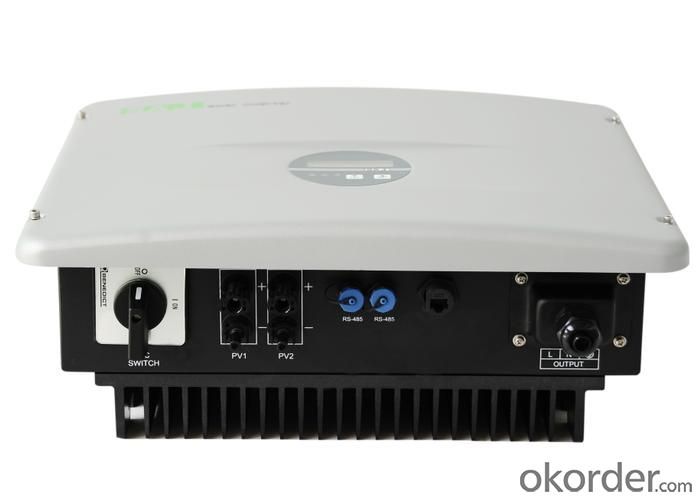
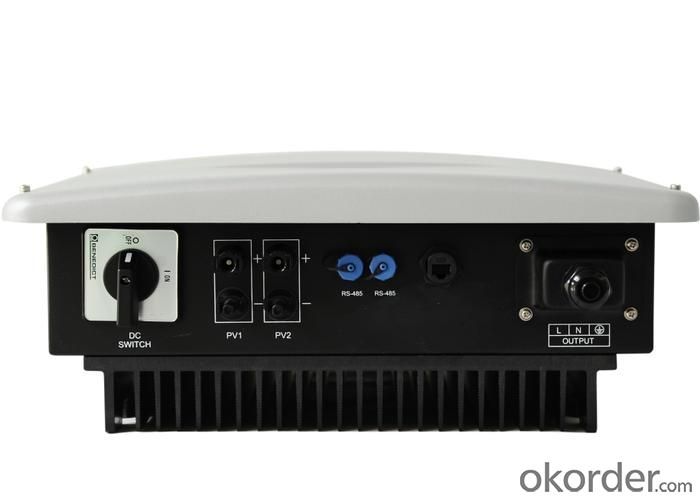
1. How can I get after sale service?
We have established after sale service center in Europe, North America, south East Asia, etc. you can email us or call the hot line.
2. Do you have shipping insurance for our goods?
We will buy shipping insurance according to customers’ demand.
3. Do you accept OEM or customized design?
OEM & ODM, any your customized lightings we can help you to design and put into product.
4. What if I need specific design?
Distributorship are offered for your unique design and some our current models.
- Q: Can a solar inverter be used in areas with unstable power grids?
- Yes, a solar inverter can be used in areas with unstable power grids. Solar inverters are designed to convert the direct current (DC) generated by solar panels into alternating current (AC) for use in homes or buildings. In areas with unstable power grids, solar inverters can help stabilize the electricity supply by synchronizing the solar power output with the grid. Additionally, some advanced solar inverters have features like grid support functions and voltage regulation, which can further enhance their performance in areas with unstable power grids.
- Q: Can a solar inverter be used in conjunction with a backup generator?
- Yes, a solar inverter can be used in conjunction with a backup generator. In a hybrid system, the solar inverter manages the flow of electricity from both the solar panels and the backup generator, ensuring a seamless transition between the two power sources. This allows for continuous power supply even when solar energy is not available, providing an efficient and reliable solution.
- Q: Can a solar inverter be used with batteries?
- Yes, a solar inverter can be used with batteries. In fact, many solar energy systems use a solar inverter to convert the DC (direct current) power generated by solar panels into AC (alternating current) power that can be used by household appliances. By integrating batteries into the system, excess solar energy can be stored for later use during periods of low sunlight or at night, providing a reliable and continuous power supply.
- Q: Can a solar inverter be used in commercial or industrial applications?
- Yes, a solar inverter can be used in commercial or industrial applications. In fact, solar inverters are commonly used in these settings to convert the direct current (DC) generated by solar panels into alternating current (AC) that can be used to power various electrical devices and equipment in commercial and industrial buildings.
- Q: Why is a solar inverter necessary in a solar power system?
- A solar inverter is necessary in a solar power system because it is responsible for converting the direct current (DC) generated by the solar panels into alternating current (AC) that can be used to power household appliances and be fed back into the electrical grid.
- Q: How does a solar inverter ensure safety during maintenance?
- A solar inverter ensures safety during maintenance by having various safety features and protocols in place. These may include automatic shutdown mechanisms that disconnect the inverter from the grid and solar panels, preventing any electrical current flow. In addition, many inverters have built-in monitoring systems that provide real-time information on voltage, current, and temperature, alerting maintenance personnel of any potential hazards. Proper labeling and clear instructions are also provided to ensure safe handling and maintenance procedures.
- Q: How does the voltage regulation affect the performance of a solar inverter?
- Voltage regulation is crucial for the optimal performance of a solar inverter. It ensures that the output voltage of the inverter remains within a specific range, typically the utility grid's voltage standards. Proper voltage regulation prevents overloading or underloading of the electrical devices connected to the inverter, safeguarding them from potential damage. Additionally, maintaining a stable output voltage enhances the efficiency and reliability of the solar inverter, allowing it to deliver consistent power to the connected load and maximize the overall system performance.
- Q: Can a solar inverter be used for residential applications?
- Yes, a solar inverter can be used for residential applications. A solar inverter is an essential component of a residential solar energy system as it converts the direct current (DC) generated by solar panels into usable alternating current (AC) electricity that can power household appliances and be fed back into the grid.
- Q: Can a solar inverter be used in a solar-powered telecommunications system?
- Yes, a solar inverter can be used in a solar-powered telecommunications system. A solar inverter is an essential component in such systems as it converts the DC (direct current) electricity generated by the solar panels into AC (alternating current) electricity, making it compatible with the telecommunication devices and equipment.
- Q: PV grid-connected inverter and independent inverter in the control of what is the difference
- The independent inverter in the output voltage phase amplitude of the frequency control is initially set good. Independent inverter, you should refer to off-grid inverter, do not need to consider the grid situation.
Send your message to us
Solar Inverter Board Sununo-TL1.5K,1 MPPT
- Loading Port:
- Guangzhou
- Payment Terms:
- TT OR LC
- Min Order Qty:
- 1 pc
- Supply Capability:
- 3000 pc/month
OKorder Service Pledge
OKorder Financial Service
Similar products
Hot products
Hot Searches
Related keywords
